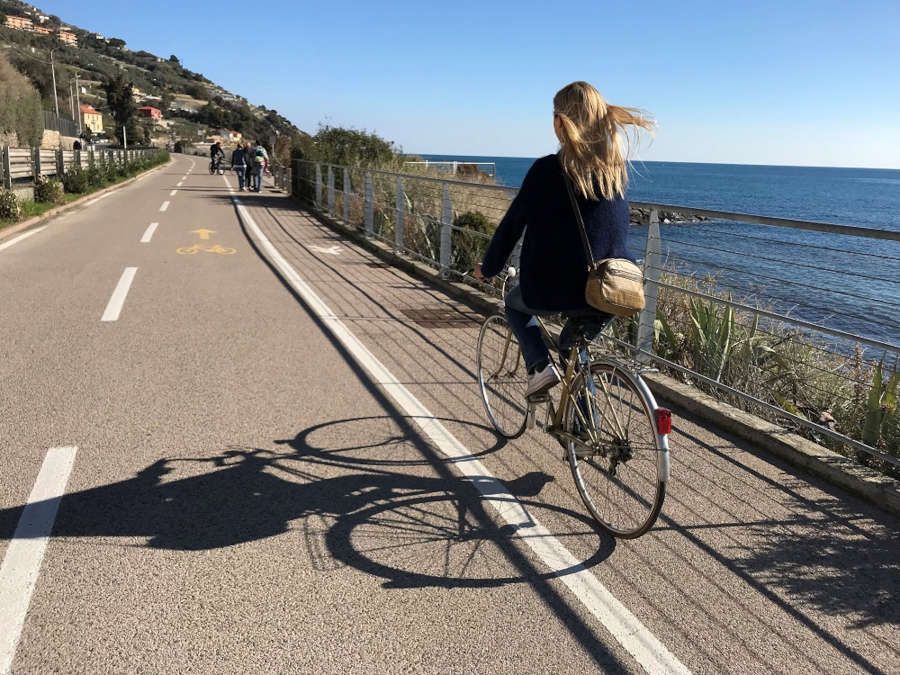Ten Winter Walks in Liguria
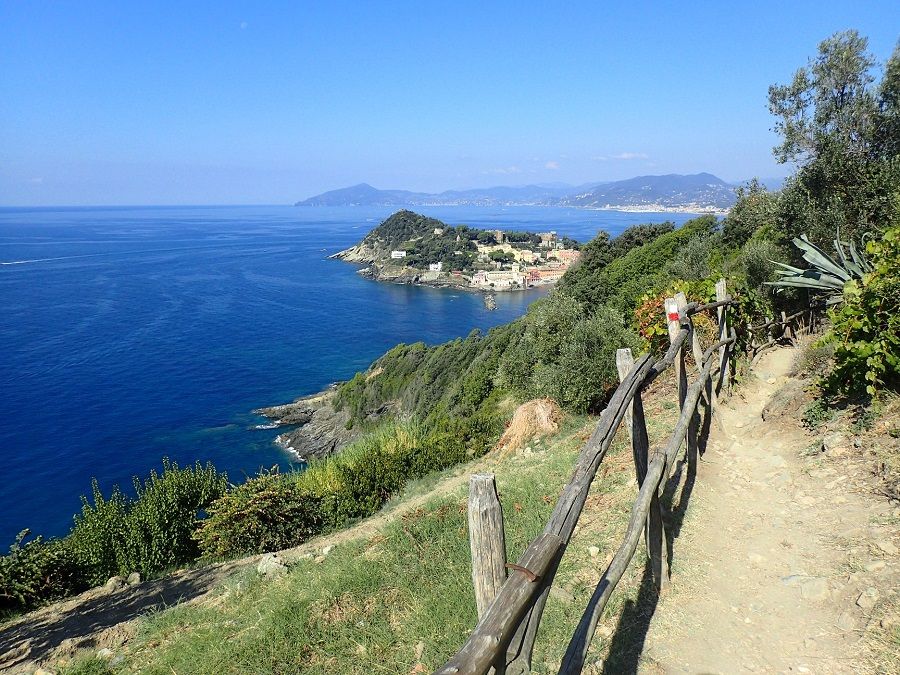
In winter, Liguria becomes a garden. Here are ten winter walks in the region, including Treks or simple excursions in the sun.
Mild temperatures, trails overlooking the sea, and evergreen panoramas. Here are some ideas for your winter walks in Liguria.
1. The Liguria Trail from the border to Villa Hanbury
An extraordinary microclimate. Atmospheres of times past. A walk to relive the beauty that brought foreign tourists to Liguria: the initial stretch of the Liguria Trail, just after the border, provides a pure emotion. The journey begins just after Ponte San Ludovico, a few kilometres from Ventimiglia, just beyond the barrier that divides Italy and France. After passing the beautiful beach with white pebbles, you cross the area of Balzi Rossi, a limestone wall over 100 meters high in whose recesses, thousands of years ago during the Paleolithic era, humans lived. All archaeological evidence is in the nearby Prehistoric Museum of Balzi Rossi. You continue on a nice dirt road that runs alongside the railway until the Dogana Gallery, and from there, a path leads to the ancient Via Julia Augusta. Through a beautiful pine forest, you reach the gardens of Villa Hanbury, a botanical garden built by Sir Thomas Hanbury, an English businessman and philanthropist, with about six thousand plants from all over the world.
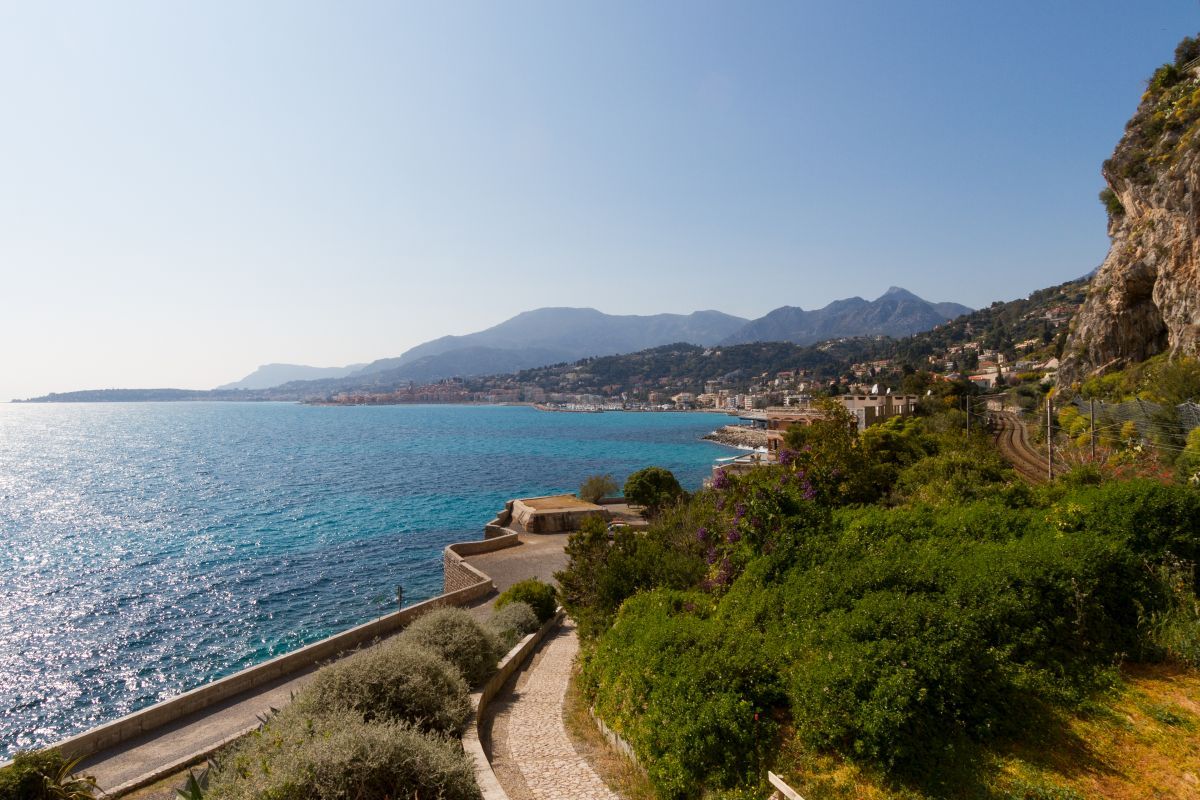
2. The ancient Pompeian Way – Cipressa
The ancient roads that once connected various villages are now extraordinary places to appreciate the panorama of Liguria. The road between Pompeiana and Cipressa is one of these. It can become a true trekking experience due to its length (approximately 9 km) and its characteristics (elevation gain), or when traversed in key sections, it offers breathtaking views. You access it by climbing from Castellaro, and in Pompeiana, from a road on the left just before the village. Once you reach the rock church of San Salvatore (more athletic individuals can climb on foot or by bike, otherwise, it’s a good starting point to leave the car), you immediately have a beautiful panorama of the coast. On the best days, you can see the entire arc of Liguria and even Corsica! The area is almost deserted, but in reality, it is rich in life: it is Prau Grande, a hilly area that affects the territories of the municipalities of Pompeiana, Pietrabruna, and Castellaro, a Site of Community Interest (SIC), as it is an ideal habitat for animal and plant species that are quite rare today, such as the eyed lizard, the largest Sauro in Italian fauna. The road continues on a slight slope, with numerous sets of benches and tables for a picnic in the azure. Finally, after a splendid pine forest, you reach the ancient tower of Gallinaro overlooking the village of Cipressa.
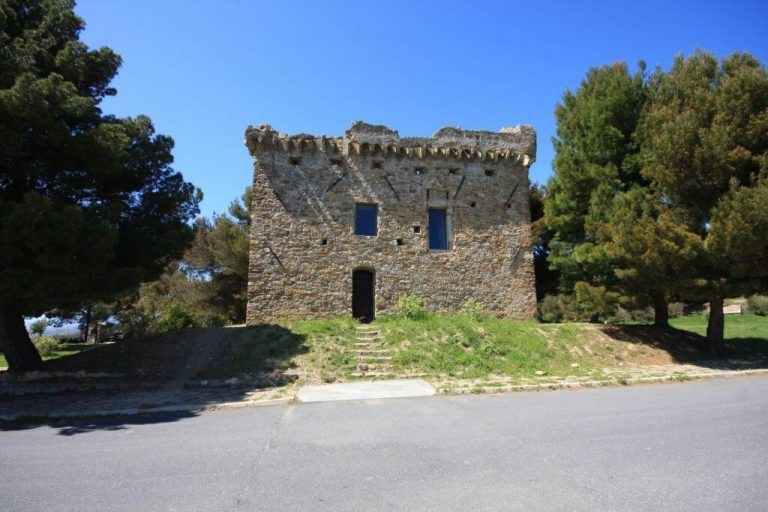
3. Nature Ring of Borgio Verezzi
Nature, history, prehistory, art, colours: in this loop path, you will find a bit of everything. To reach it, you will have to climb (by car, bike, on foot) to Verezzi, a village with clear Saracen origins, one of the most beautiful villages in Italy. From here, an approximately eight-kilometer itinerary starts, which, at a normal walking pace, can be completed in about 3-4 hours. Climbing from the level crossing of Borgio, you encounter, amidst the Mediterranean scrub, euphorbias, broom, and lavender, the quarries of Verezzi stone with which the village was built. Once you reach the ancient cliff, the path continues among the holm oaks to the ancient Phoenician mill, where near a large stone cross, a pilgrimage site, a beautiful panoramic point opens up. This is the highest point of the route (at 285 m above sea level) from which you can observe the settlement of Borgio and all the fractions of Verezzi. Then you descend passing through the castellaro area, rich in red soils and goats, named after the nearby presence of an Iron Age hill fort. With a short and steep descent, on the edges of fields once cultivated with almond trees, you reach Crosa and subsequently Verezzi with the famous Piazza S. Agostino, a renowned venue for the summer theatre. A visit to the nearby Valdemino caves, the most colorful in Italy, is a must.

4. Cycle-Pedestrian Path Arenzano – Cogoleto – Varazze
Ideal for a stroll or a bike ride by the sea. The coastal stretch Varazze – Arenzano is a route for all seasons along the path of the old railway, passing through enchanting coves, hidden beaches, and cliffs overlooking the sea.
The route is part of the cycle path that starts from Arenzano, passes through Cogoleto, and reaches Varazze on the former railway route, crossing a section of the Beigua Riviera. It traverses an area of unspoiled nature, with glimpses of beautiful beaches where the temptation for a plunge, even in winter, is strong, while splendid villas with bold architecture enjoy the scenery. The Varazze – Cogoleto route is four kilometres long, taking about two hours on foot, but it’s worth the return. If you do it by bike, you can start or continue to Arenzano.
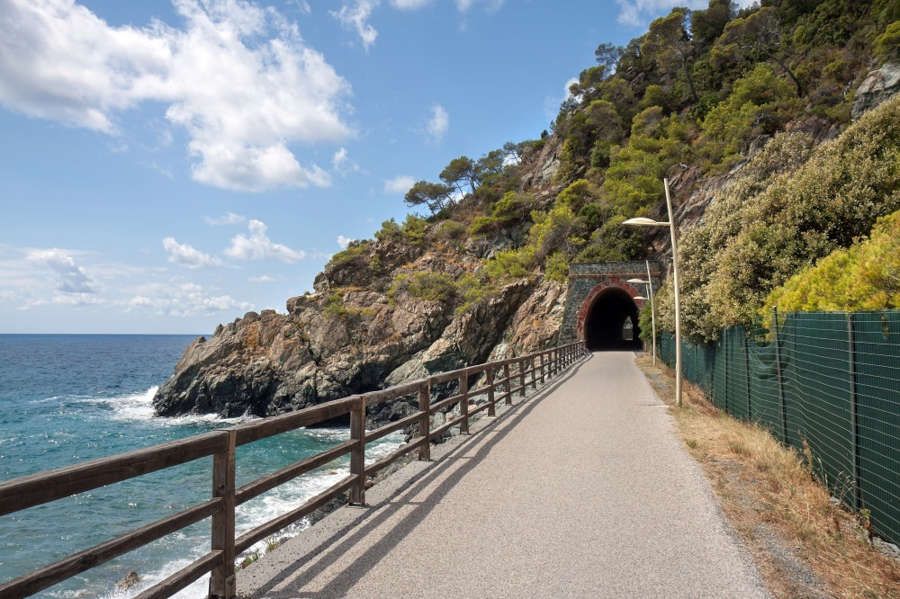
5. The Tour of the Forts of Genoa
Genoa awaits you with its port, its narrow streets (caruggi), and its melancholy by the sea. But this city, which has been great, has those who protect it: its forts. The magnificent landscape of the locally protected natural area ‘Parco delle Mura’ derives its name from the New Walls, erected in the seventeenth century to defend the city and represents, with its 12 km, the longest city walls in Europe. The military forts, built between the seventeenth and nineteenth centuries, are now natural conservation areas where some protected animal and plant species live because they are rare or endemic. You will discover that there is a Genoa by the sea and a Vertical Genoa. To reach the start of the trail, use the Righi funicular: from the terminus, continue towards Forts Castellaccio and Sperone, at an altitude of 450 meters. From there, you already enjoy a stunning view of Genoa. Continue towards the nineteenth-century Fort Begato, which overlooks the Val Polcevera, or with the variant towards the interior for the small Fort Puin. Finally, the beautiful Fort Diamante, at 660 meters above sea level, the most beautiful, the highest, and isolated in the Park. Even in the surroundings of Genoa, you can find interesting ideas for your walks.

6. From Rapallo to the square in Portofino
From an ancient castle by the sea to the symbol of elegance and refinement, stringing together one after another the extraordinary pearls of the Gulf of Tigullio: Rapallo, San Michele di Pagana, Santa Margherita Ligure, and Portofino. From Rapallo to Portofino, an 8 km walk completely overlooking the sea, touching places now ingrained in the collective imagination, such as Paraggi, a small bay framed by green hills, located on the Riviera di Levante on the Portofino Promontory, or the beach of Niasca, until reaching the characteristic square of Portofino frequented by the world’s jet set. Those who still want to walk can continue to Castello Brown and then further towards the lighthouse, a sentinel reaching out to the sea.
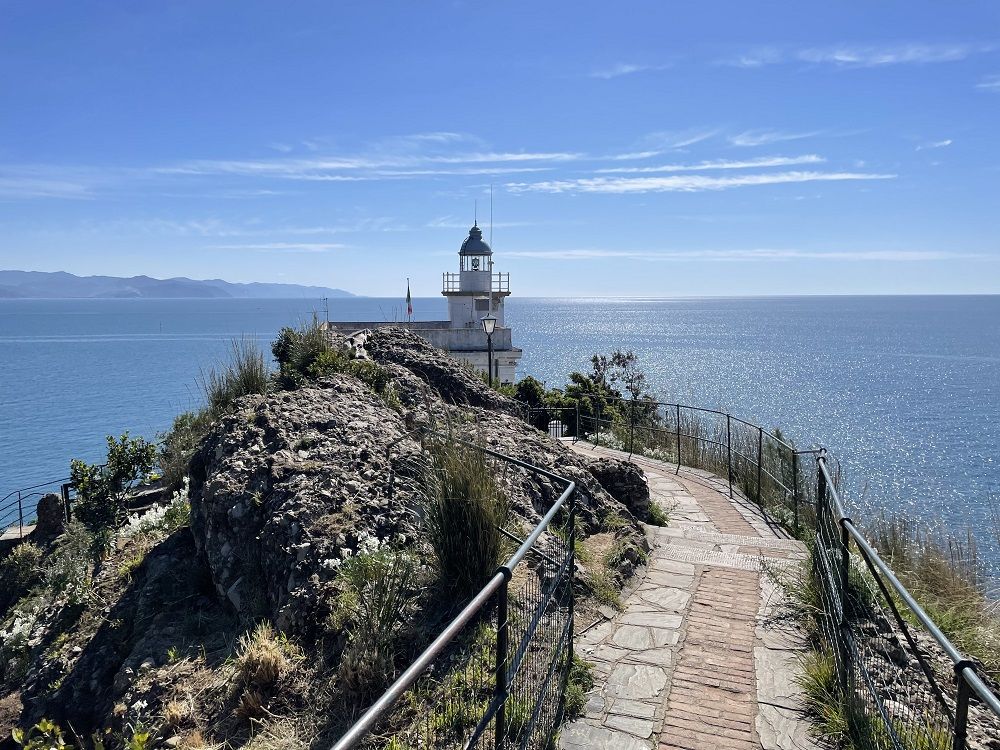
7. From Sestri Levante to Riva Trigoso passing through Punta Manara
A bridge between two seaside villages. An elevator to a paradise among olive trees. The walk between Sestri Levante and Riva Trigoso is a concentration of Liguria: two characteristic villages; a path among olive trees, pines, and Mediterranean vegetation; an ancient watchtower where the gaze is lost out to sea; an extraordinary typical dish, the bagnun di acciughe. The journey starts from the narrow alleys of Sestri Levante, and the path is well marked, so you can’t get lost. The route is not complicated, but it’s better to wear comfortable shoes since it soon becomes unpaved, making you feel like leaving civilization behind to reveal the panoramic beauty of Sestri Levante. Info: www.sestri-levante.net

8. The cycle path between Levanto, Bonassola, and Framura
Pure Mediterranean charm between the sea and the coastal vegetation, interspersed with the darkness of the tunnels: the cycle path between Levanto and Framura was once reserved for the train that wound its way like a caterpillar through the hills of the eastern coast. Today, the path, approximately 5 km in total length, is completely flat and can be walked or cycled. It starts above the Porticciolo of Framura, near the train station, and reaches Levanto in the Valle Santa area, passing through Bonassola. You walk between large open spaces overlooking the sea where you can access coves waiting to be discovered, such as the beach of Porto Pidocchio. In this inlet, a rock wall has recently been equipped for climbing enthusiasts. The path to the left after the last tunnel before Bonassola is beautiful and wild. Don’t miss the walk towards Madonna della Punta as well.
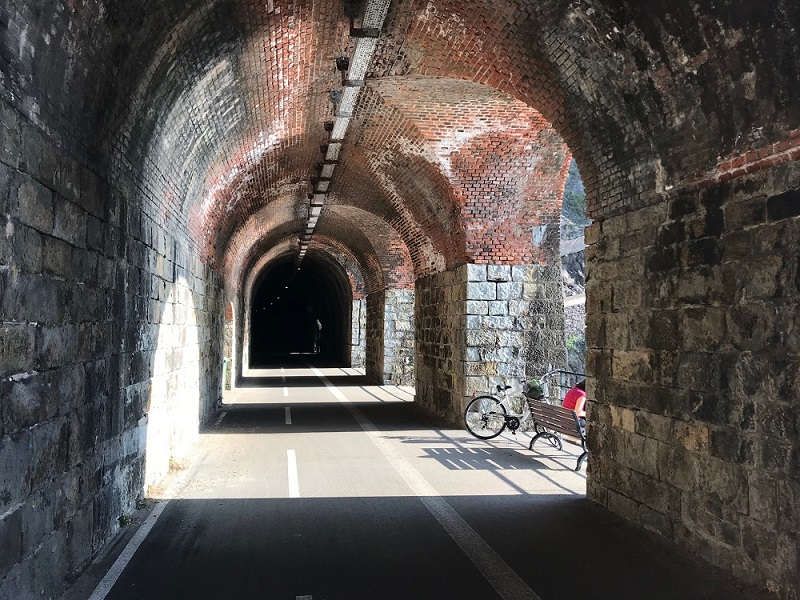
9. Vernazza – Monterosso
The essence of the Cinque Terre, among narrow streets, vineyards, olive groves, lemon groves, monorail trains, and areas rich in biodiversity. The trail (SVA2) starts from the charming harbor of Vernazza, immediately ascends above the village, and becomes a dirt path, steeply winding along the coast. The second part of the trail, passing through ancient lemon groves and vineyards, gradually descends before reaching the village of Monterosso. The path is narrow and exposed in some sections, and it is recommended to wear trekking attire and suitable shoes. For info click here
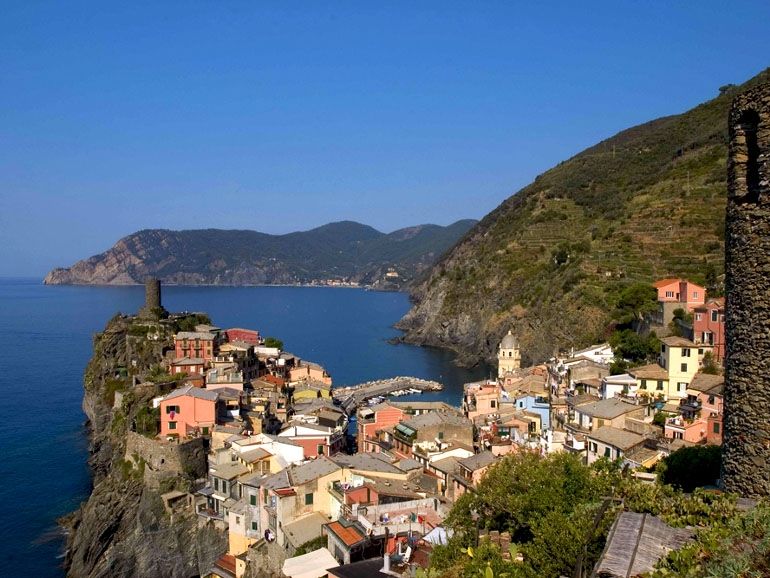
10. The Flower Riviera Coastal Park bike path
The 28 kilometres of the Flower Riviera Coastal Park bike path, starting from Imperia to San Lorenzo al Mare and reaching Ospedaletti, passing through Santo Stefano al Mare, Riva Ligure, Arma di Taggia, Sanremo, and Ospedaletti, are unparalleled in Liguria. It’s challenging to find such beautiful routes in Italy and even in Europe. In fact, many foreigners come to the Ponente Ligure to ride it. The bike path is built on the former train route, making it completely flat and suitable for walking in its main sections. San Lorenzo al Mare is a small village protected by the mountains, with colourful houses of fishermen. Riva Ligure is a typical Ligurian village clinging to the coast and touched by the azure waters of the sea. Arma di Taggia is a cheerful holiday resort that smiles even in winter. Sanremo needs no introduction: the path is a stone’s throw from the Casino and the Imperatrice promenade. Ospedaletti already has a touch of Provence.
